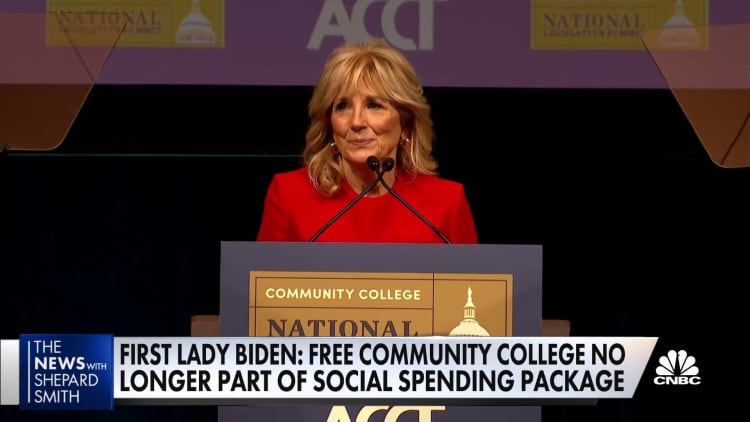When it comes to improving access to higher education, each state is largely left to its own devices. Some are trying a broader array of tactics than others.
Connecticut, for example, recently rolled out several programs to establish pathways to college and lower the debt burden.
Connecticut has also maintained one of the largest wealth gaps in the country for years. The state is hoping its college aid endeavors could help change that.
Getting a degree offers the best shot at social mobility, according to Anthony Carnevale, director of Georgetown's Center on Education and the Workforce, which could help narrow the income divide.
Still, these plans have mostly flown under the radar. "We have these incentive programs, but nobody knows about them," Connecticut Gov. Ned Lamont told CNBC.
Here's a closer look at three of those initiatives — and how they've fared so far.
Free college program
"We're trying to do everything we can to make education less expensive to start with," Lamont said.
Like a growing number of states, Connecticut recently introduced a free tuition program for students attending community college either full- or part-time. In Connecticut, students receive "last-dollar" scholarships, meaning the program pays for whatever tuition and fees are left after federal aid and other grants are applied.
Since the program started, in the 2020-21 academic year, nearly 34,000 students have participated.

Free college is one of the best ways to combat the college affordability crisis, some experts say, because it appeals more broadly to those struggling in the face of rising college costs, rather than the student loan burden after the fact. A federal effort has yet to get off the ground, although President Joe Biden continues to push for free community college nationwide and included it in his $7.3 trillion budget for fiscal 2025.
However, critics say that lower-income students, through a combination of existing grants and scholarships, already pay little in tuition to two-year schools, if anything at all.
Further, free college programs do not generally cover books or other expenses, such as room and board, that lower-income students also struggle with.
Automatic admission program
To make a four-year degree more accessible, Connecticut introduced an automatic admission program to some Connecticut colleges for high school seniors in the top 30% of their class.
The program, signed into law in 2021, aims to make it easier for high school students, especially those from underserved communities, to go to college. In the most recent application cycle, 2,706 students were offered direct admission through the program.
More from Personal Finance:
FAFSA fiasco may cause drop in college enrollment, experts say
Harvard is back on top as the ultimate 'dream' school
This could be the best year to lobby for more college financial aid
Connecticut State Colleges and Universities Chancellor Terrence Cheng said the free-tuition program and the automatic admissions program "are just two examples of steps CSCU and the state have taken to remove barriers to higher education, particularly for first-generation college and minoritized students."
And yet, for lower-income students, the cost can still be a deterrent, said Sandy Baum, senior fellow at Urban Institute's Center on Education Data and Policy.
"Both admitting students and telling them how easy it is to pay for it is most helpful, but for students on the margin, they face so many expenses in addition to tuition they will still need to overcome," Baum said.
Student loan payment tax credit
Next up, the state is rolling out a student loan repayment program to lessen graduates' debt burden.
In 2019 Lamont signed Public Act 19-86, which created a new tax credit for Connecticut employers who help pay off their employees' student loans. The tax credit was expanded in 2022 and will be implemented in the months ahead.
"It helps the student, it pays down their debt, makes it very predictable [and] gives businesses an incentive to hire, so it's a great economic development driver," Lamont said.
Still, some graduates already pay little or nothing through the federal government's income-driven repayment plans, Baum said, so borrowers may be better served with a salary increase. "If employers paid more, that would be a lot more fair."
Ultimately, these programs are all helpful to some degree, but successfully narrowing the wealth gap — in Connecticut and elsewhere — should include assistance for students while they are in college, Baum said.
Improving student outcomes by providing academic and social support in addition to financial aid is the best way to level the playing field, she said.
Many young adults start college, fewer finish. "Rather than focusing on getting people in the door ... getting people through is going to have a much bigger impact," Baum said.


